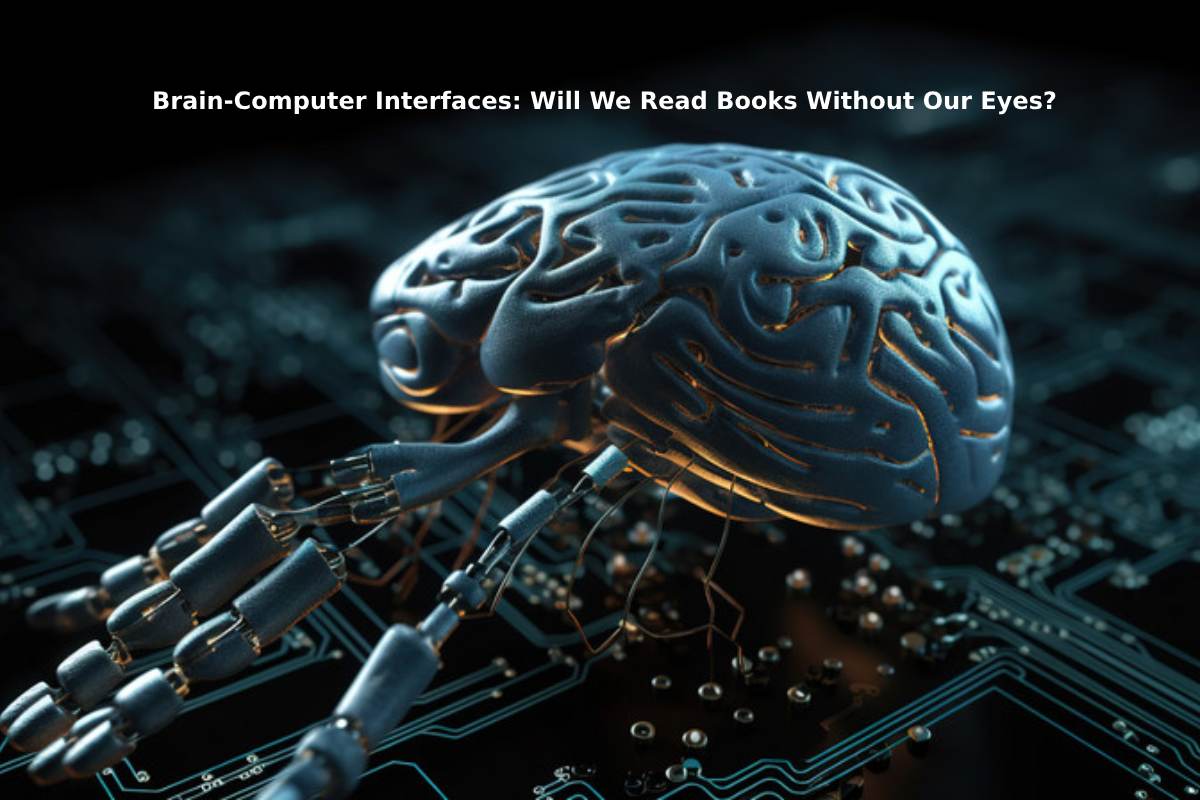Thinking Stories Into Existence
The idea of reading without using the eyes may sound like something pulled straight from a science fiction novel yet the science is real and it is moving fast. Brain-computer interfaces or BCIs are now catching the attention of neuroscientists engineers and even storytellers. These systems translate brain activity into signals that can control a computer or device no hands or eyes involved.
Once limited to medical research BCIs are now stretching into new territory. Reading for example could shift from a visual process to a mental one. If thoughts can write emails or play music why not turn the page of “Pride and Prejudice” using nothing but neural signals? That is not just futuristic talk. Early tests already show promise for transmitting language directly to the brain through implants or non-invasive headsets.
From Screens to Synapses
Books have always adapted to the times. Scrolls gave way to print and now print is sharing the spotlight with e-readers and online archives. But BCIs take things one leap further. No screens. No turning pages. Just the story flowing straight into the mind like a stream that never breaks.
One project known as “silent speech” research tries to decode words that people silently say in their heads. When fully developed this could allow a person to read or speak to themselves internally and have a computer catch every word. That means books could be “read” mentally even while walking commuting or resting. It sounds like telepathy but it is just science stepping up its game.
This is not only about convenience. For people with limited sight or mobility BCIs may unlock entire worlds of literature. Not just in audio form but in full neural response. The difference between listening to a story and mentally processing it with the same brain patterns used for reading could be subtle but profound.
What Would Reading Feel Like?
The brain does not process text and audio in the same way. Reading creates a kind of slow burn. It allows reflection pause and depth. BCIs might need to replicate that pace rather than overwhelm the brain with a flood of information. Imagine sitting still while a book unfolds inside the mind like a theatre play rehearsed on the stage of memory.
There is also the matter of control. Skimming pages rereading lines highlighting quotes—will all of this be possible through thought? Some prototypes suggest that eye movements combined with neural signals can manage simple commands. The rest is still in the lab but not for long.
Before getting swept away in the tech thrill it is worth thinking about the emotional side of reading. That quiet moment of opening “To Kill a Mockingbird” and feeling the world hush around. Can a BCI recreate that same weight and silence? Time will tell.
This evolution brings up new questions and prompts careful comparison with what exists today:
easy to compare Z lib with Library Genesis and Project Gutenberg on availability yet none of these platforms engage the brain directly. BCIs would not just store books. They could deliver them into the reader’s awareness with no physical layer in between.
Early Clues and Ongoing Questions
Not every attempt at mind-reading tech is successful but some projects show real sparks. Researchers at Stanford and UC San Francisco have already turned thoughts into sentences using implants. Meta is reportedly working on a wristband that can decode nerve signals to control devices. It is not reading books yet but the direction is clear.
To better understand what might shape the future of BCI reading here are some key ideas at play:
-
Mental Bandwidth Still Has Limits
Even if signals can travel quickly from brain-computer human attention works at its own pace. Stories unfold best when allowed room to breathe. A BCI would need to respect the rhythm of narrative thought rather than bulldoze through plot points.
-
Neural Fatigue Is Real
The brain gets tired and if BCIs demand constant focus then reading might become mentally exhausting. That means engineers and designers must build in ways to rest the mind or share the load across senses. Some hybrid models already combine visual input with mental control.
-
Not All Brains Are the Same
BCIs would need to adjust to individual readers. No two people think in exactly the same way. Personalisation would be crucial. Just as some people prefer printed books and others love e-readers the same could happen with brain-computer based reading formats.
As the list shows this is not just about chips and wires. It is about memory tone pacing and voice. In other words the soul of reading. If BCIs get that right they might win over readers without ever flashing a single word on a screen.
A New Chapter Beckons
For now the thought of downloading “The Brothers Karamazov” straight into the mind remains mostly a dream. But dreams shape reality more often than we admit. The same way the printing press redefined learning so too could BCIs reshape the experience of story.
Writers may one day create narratives designed not for pages but for brainwaves. And readers might not need to hold a book or scroll a screen ever again. It will not replace traditional reading but it could sit beside it offering new ways to connect with old tales. The magic of stories is not tied to the medium. It lives in the mind. And the mind it seems is just getting started.


